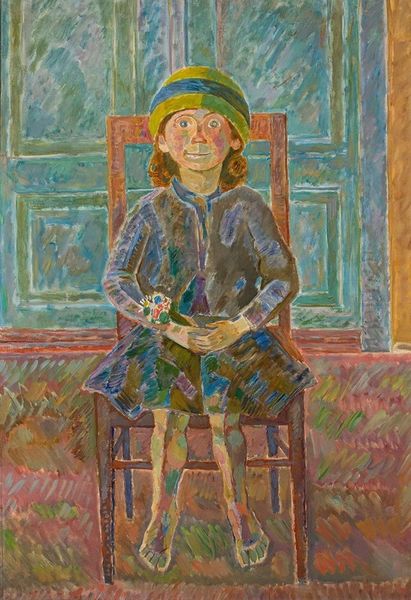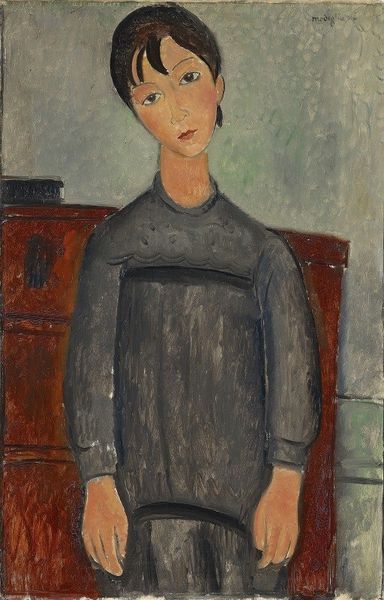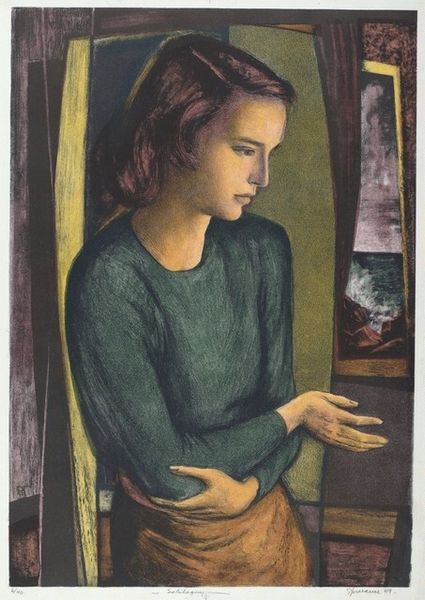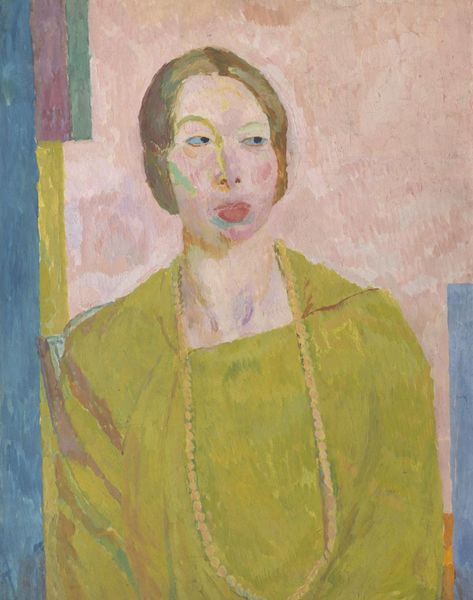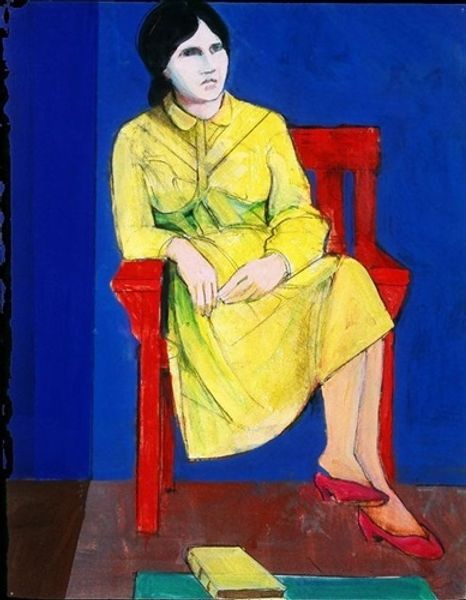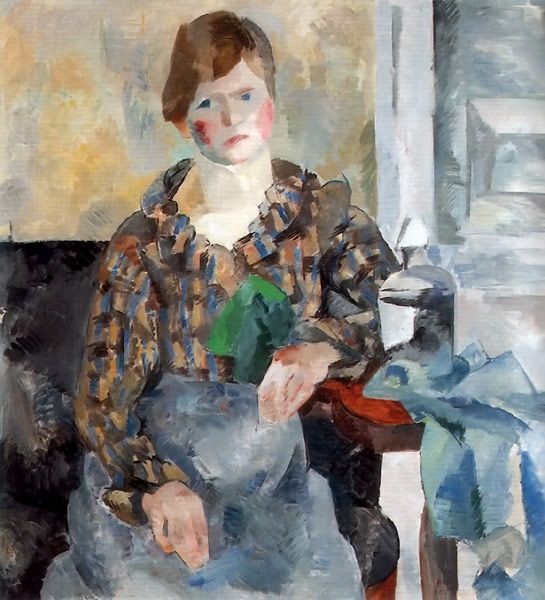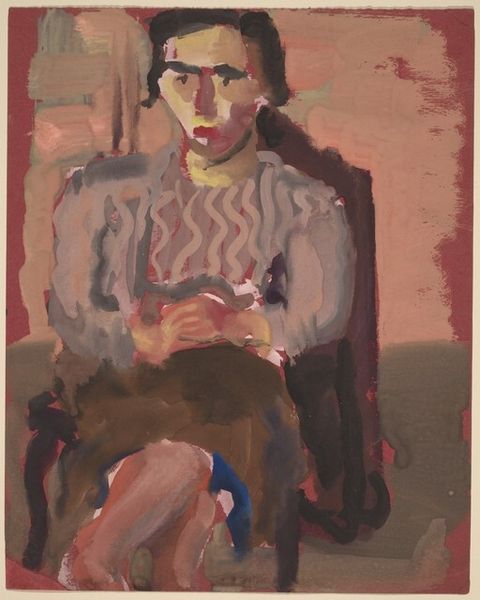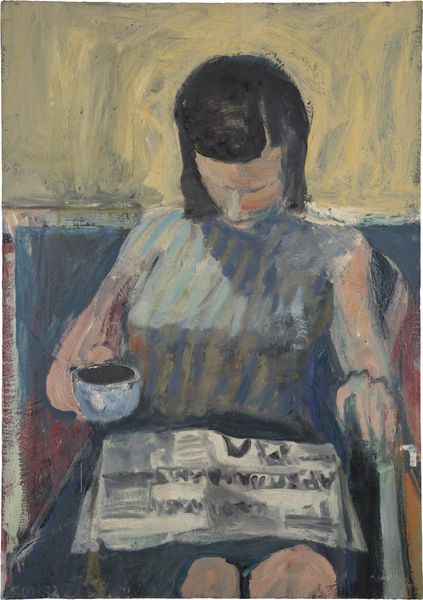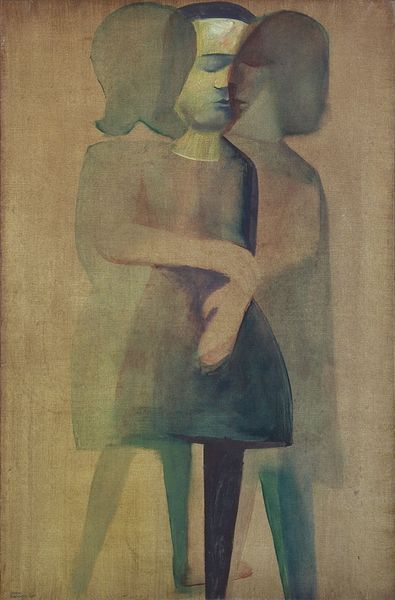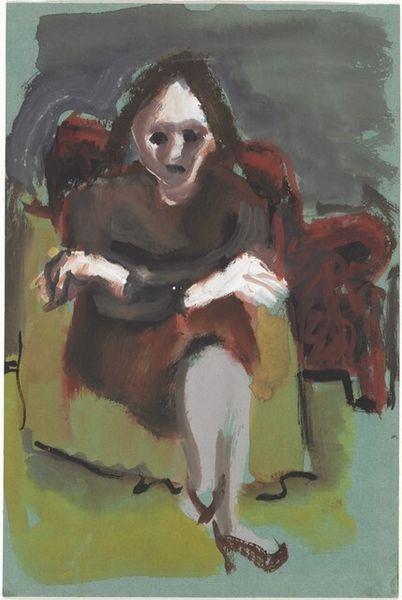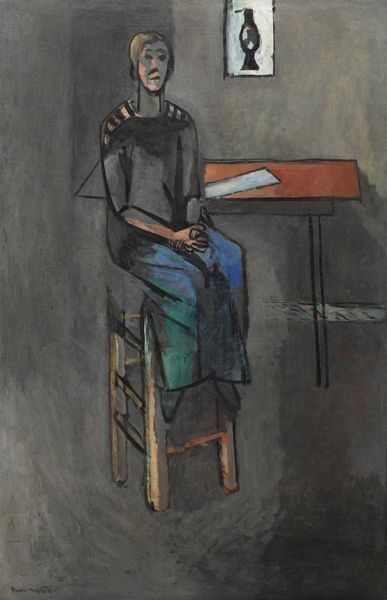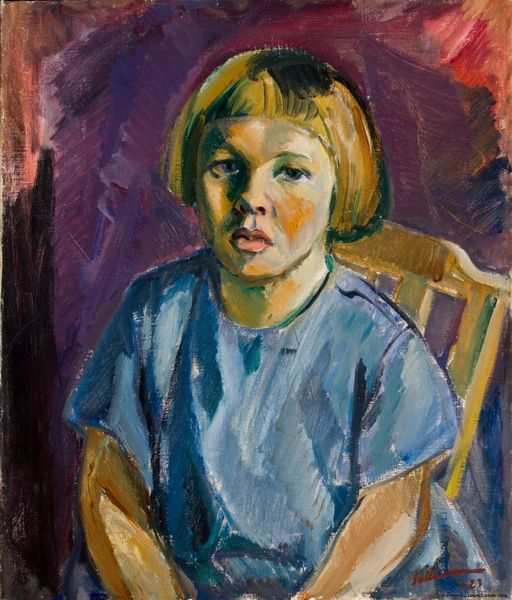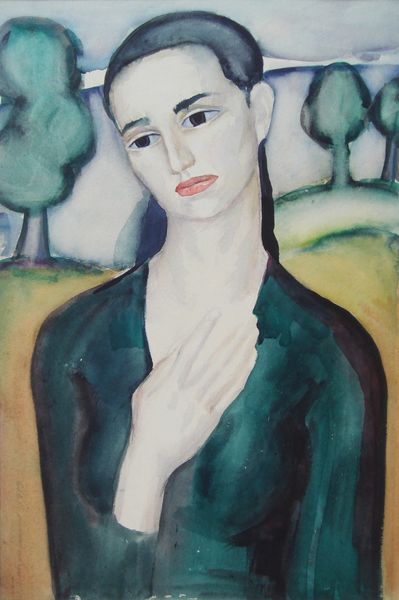
painting, oil-paint
#
portrait
#
painting
#
oil-paint
#
figuration
#
oil painting
#
geometric
#
italian-renaissance
#
modernism
Copyright: Felice Casorati,Fair Use
Editor: Looking at "Santina," an oil painting by Felice Casorati, I'm immediately struck by the figure's almost haunting stillness. It’s a portrait, but her gaze doesn’t quite connect, and the muted colors lend it a somber air. What can you tell me about the context of this work? Curator: It’s fascinating how Casorati evokes such a reserved yet powerful presence, isn't it? Considering the social and cultural atmosphere in Italy during the early 20th century, what might this restrained depiction of a young woman be communicating? Think about the evolving role of women at the time, and the dominant political climate. Editor: I suppose a figure that resists idealization could be read as a quiet form of rebellion? A refusal to participate in established norms, maybe? Curator: Exactly! And notice the geometric forms underpinning the composition. How does that rigidity contribute to the overall feeling? Editor: The geometric shapes create a sense of formality, almost like an oppressive structure holding the figure in place. Curator: Indeed. Casorati was engaging with modernism while referencing Renaissance artistic traditions. How might the dialogue between these styles play into the painting’s reception? Editor: It gives it a timeless quality but also suggests a break from the past, a tension between tradition and modernity that mirrors the societal shifts happening then. Seeing that clash really opens up my eyes to this painting's historical message. Curator: And that tension, ultimately, makes this more than just a portrait; it’s a subtle commentary on a society in transition. Hopefully that contextual background enhances your understanding of the imagery.
Comments
No comments
Be the first to comment and join the conversation on the ultimate creative platform.
